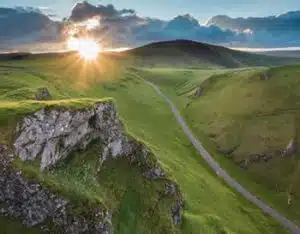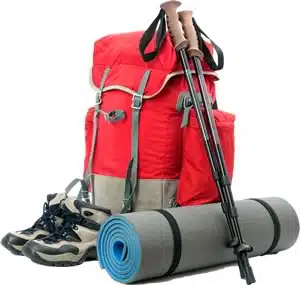Walking in the UK and Walking holidays in the UK are becoming increasingly popular as a result of the huge diversity of the UK’s landscape and the good road and rail network that make the national parks easily accessible. All levels and types of walking are available from the stark and challenging mountains of the Inverness Highlands to the gentle rolling countryside of the Downs.
Best places to walk in the UK
The most popular areas for walking in the UK are Black Mountains, Brecon Beacons, Cairngorms, Cheviot Hills, Chilterns, Cotswolds, Dartmoor, Exmoor, Grampians, Inverness, Lake District, Loch Lomond, Mendip Hills, Nevis Range, New Forest, North York Moors, Northumberland National Park, Peak District, Pennines , Ribble Valley, Salisbury Plains, Snowdonia, Solway Coast, Thames Valley, The Downs, Yorkshire Dales.

Get a good map
The UK has been exceptionally well mapped and various scales of map are available and cover the whole of the UK. The National Parks in particular are extremely well mapped. It is always advisable to carry a good local map when you go walking and a compass, whistle and waterproof jacket (British weather is famously changeable).
Footpaths are generally well signposted but in some more remote areas this may not be the case. For the best sign posted routes it is best to stick to the large national routes that are maintained by national government.
Preparing For Walking Trips And Holidays
Walking can be a great experience, but you will want to prepare before you take off, especially if you are a beginner hiker. Though not always the case, walking is not like traditional holidays which require preparation in terms of locating your accommodation, finding a beach front holiday rental or other details such holidays entail. Walking requires preparation related to fitness and essential items specific to walking.
Of course, you want to make sure you have achieved general fitness as walking requires endurance and strength. Once you have achieved a basic fitness level in preparation for your hike, a few specialised activities specifically related to walking that can help you prepare even more.
Taking care of your feet

Benzoin is a special ointment that can help with sores, gradually make skin tougher and even helps kill germs. As any experienced hiker would likely agree, dealing with blisters needs an entirely separate article to fully describe. But, if you do get blisters it is important to puncture them and avoid doing too much walking until they heal if possible. You can try to avoid blisters by covering the parts of your feet that are more likely to develop them with a band-aid or moleskin. Also, be sure you have trimmed your toenails before heading out for the hike, but be sure to not trim them down too far.
Another good idea is to gradually work up to a long hike in stages, maybe one to two miles. If you are in fairly good shape, you should limit yourself to around five miles at first. Walking is more demanding than simply walking on your sidewalk, as it usually entails walking on slanted, uneven surfaces. For this reason, it is a good idea to build up your endurance at least in terms of distance.
Get used to your backpack

Of course, nobody wants to get lost which is why it is important to have some type of navigational guide. This is especially true if you are going to an unfamiliar area or onto unmarked trails. You can choose a map, compass or a GPS unit all of which can help provide some direction. Of course, you want a GPS unit you know how to use if you prefer this device.
As you see, walking is not just a stroll through a forest. It takes preparation to ensure you have a safe and enjoyable experience!
You may be interested in
If you enjoyed this article, you may be interested in other guides in our camping holiday series:

